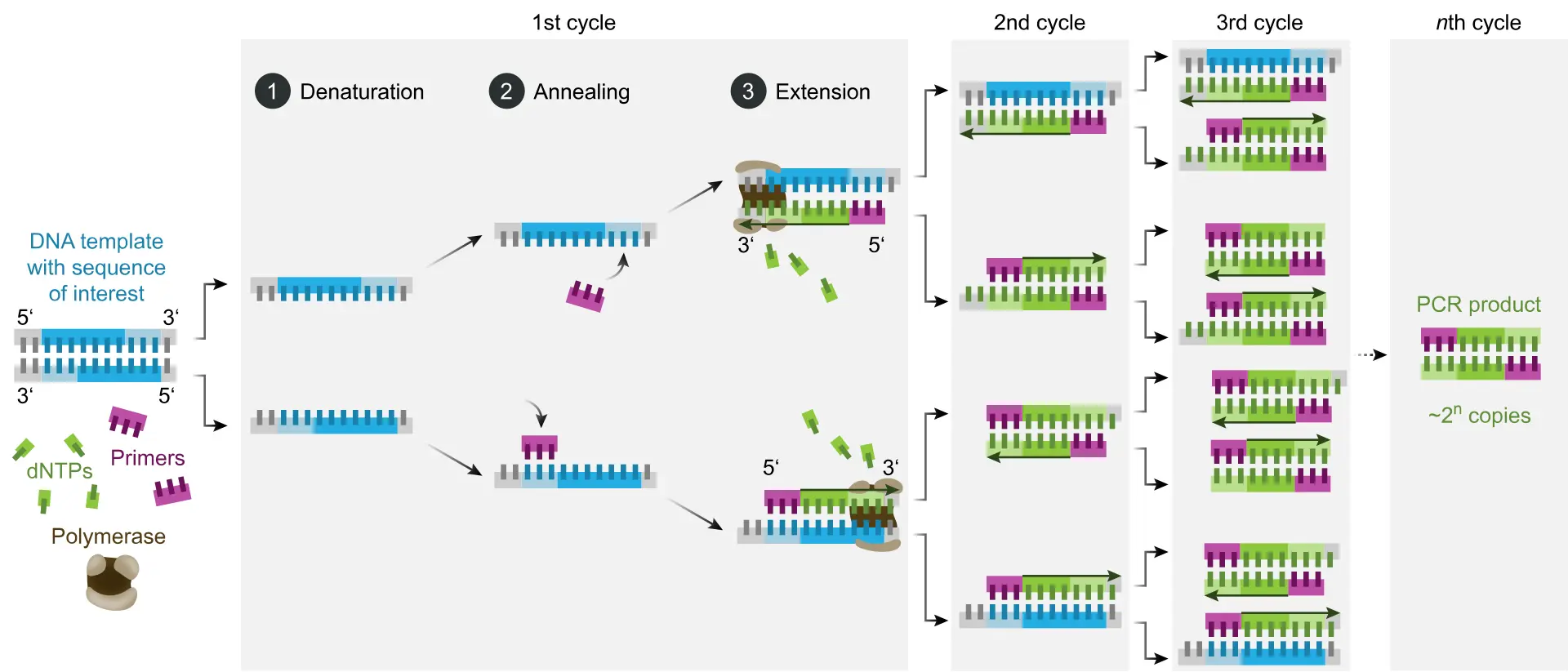Understanding the Technique That Revolutionized Molecular One of the most effective
One of the most effective instruments in contemporary biology is the Polymerase Chain Reaction (PCR). From a single drop of blood, a piece of hair, or even ancient samples, it enables scientists to produce millions of copies of a particular DNA segment in a matter of hours.
What Is PCR?
A molecular biology method for amplifying DNA sequences is called PCR. Rapid genetic analysis was made possible by this technique, which was created by Kary Mullis in 1983 and allowed for the targeting and replication of particular DNA regions.
How It Works
The Three Basic Steps in the PCR Process
PCR uses a straightforward yet effective set of temperature adjustments that are repeated 25–40 times. It only takes a few minutes per cycle.
1. Denaturation at 94–98 degrees Celsius
When the hydrogen bonds between the strands of double-stranded DNA are broken by heat, single-stranded DNA is produced.
2. Annealing at 50–65 degrees Celsius
Primers are brief segments of DNA that attach to the particular target sequence on each strand. The beginning and ending of the region you wish to amplify are matched by these primers.
3. Extension (at 72°C)
By incorporating nucleotides into the primers, the enzyme Taq DNA polymerase creates two double-stranded DNA molecules.
Real-World Applications of PCR
PCR is now widely used outside of research labs. In routine medical, legal, agricultural, and environmental contexts, it is essential.
